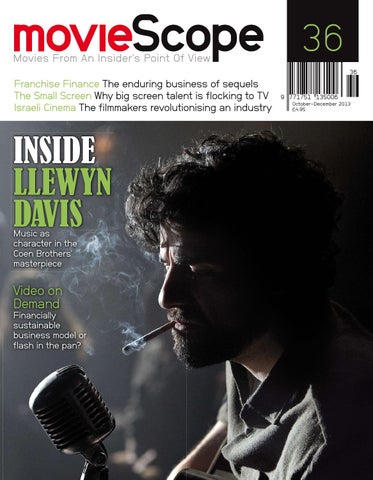Song For Marion – Photo by Nick Wall
Tom Harvey, CEO of Northern Film & Media, reveals why the new North East Creative Content Fund could provide a blueprint for sustainable film funding.
Back in 2009, we all knew that large cuts to public sector infrastructure and spending in the UK were looming. A mounting public deficit and shifting political sands prompted a radical rethink in the way that taxpayers’ cash contributed towards the development of film and other creative industries. This rethink is still underway with the UK Review of Film and new structures for the BFI and Creative England.
Here at Northern Film & Media, funding from One North East (north-east England’s regional development agency) and the UK Film Council had provided seed funding from which we were able to attract a healthy pot of around £2.3m per year to support the growth of the region’s creative industries. We were acutely aware that this level of public subsidy was unlikely to continue.
Tom Harvey, CEO Northern Film & Media
The north-east has always been receptive to the role that the creative industries can play in driving the development of a balanced economy, one in which those industries would sit alongside other sectors such as manufacturing, engineering and energy, to deliver growth in the region. We had already secured a £1m fund from One North East to pilot an investment model for the region’s film, TV, digital media and music sectors. Moving away from traditional public sector grants to a model based on recoupment, we successfully invested in a broad range of projects, from Turner Prize winning artist Gillian Wearing’s feature-length directorial debut Self Made to micro-budget features Rising Tide, Frank and No Place To Hide and the long-running, popular BBC TV drama Inspector George Gently. Investment had created a ‘critical mass of activity’ (Olsberg Report, 2011), laying the foundations for a larger fund.
One of the challenges with public funds investing in creative industries is how to marry the public sector targets of company and job creation with the incentive to make profit. Public sector investors are too driven by the cultural and creative aspects of the projects. Non-specialist venture capital funds are driven by profit but often lack the expertise to understand the investments they are making. In both cases, this makes the creative industries very high-risk investments.
Early in 2010, we had the opportunity to try and square this circle. We were able to draw together a £2.4m investment pot for the north-east’s creative industries over a two-year period. Teaming up with venture capital firm Northstar Ventures, the Finance for Business North East Creative Content Fund was charged with uncovering a more sustainable model to invest—rather than grant—public money in north-east England’s creative industries. Though the normal public sector targets of new companies and jobs still applied, we were able to put the emphasis much more on commercial return.
In theory, at least, this provided a methodology that combined commercial expertise with industry expertise. Northern Film & Media would use its industry knowledge and networks to identify and prime projects for investment. Northstar Ventures would bring investment expertise to the table and an ability to identify investors (successful applicants had to provide a 50 per cent private match).
Demonstrating a strong return will be pivotal if we are to be successful in making the case for a new fund.
Film proved to be the real winner over the lifetime of the fund, which came to an end in December 2011. 13 of the 17 investments were made in film projects/companies. These included Steel Mill Pictures’ Oscar-tipped Brit flick Song for Marion (starring Terence Stamp, Vanessa Redgrave, Gemma Arterton and Christopher Eccleston), Corona Pictures’ darkly comedic road-trip movie The Liability (starring Tim Roth, Peter Mullan, Talulah Riley and Jack O’Connell) and The Man Inside (starring Peter Mullan, David Harewood, and Michelle Ryan), the new crime thriller from City Rats producer Dean Fisher and Kaleidoscope Entertainment. The fund successfully brought over £5m of investment into the region and invested in a series of commercial film, TV and digital media projects.
So what did we learn?
It would be fair to say that we invested in a distinctive type of film. The size of the fund and the need to generate the best possible return on investment meant that we prioritised projects towards the lower end of the budget scale. Several artistically rich projects missed out because they were unlikely to provide the potential for high returns.
Rising Tide
A dedicated fund for creative content significantly improved the chances of companies operating within the sector to gain investment. In the UK, creative companies have a poor record of accessing investment from funds that are not sector specific. The combination of industry and finance knowledge worked. This assertion was backed by a Confederation of British Industries (CBI) report that praised the fund for ‘de-risking investment in the creative industries’. Indeed, the partnership between the investment-savvy Northstar Ventures and industry-connected Northern Film & Media revealed a way in which the public and private sectors could effectively work together to deliver commercial results and value for the British taxpayer.
A vital third leg of the structure was the location and production service that Northern Film & Media was able to offer. This provided a full support package for production companies interested in working with the fund, including familiarisation trips and practical on-the-ground advice on locations, crews and facilities. Production companies were provided with the local knowledge and tools to gain the confidence needed to make shooting in the north-east a success.
Northstar Ventures provided the ability to manage complex projects with multiple financiers from the point of sourcing investment, through to legal and business affairs issues. This complementary relationship provided a one-stop shop in the north-east for filmmakers to access investment and deliver production in the region. It also helped to instil enhanced commercial discipline and incentive in recipient and applicant companies.
In terms of the commercial performance of the investments, the early signs are promising. We are beginning to recoup on our investments and we have high hopes for several projects. Demonstrating a strong return will be pivotal if we are to be successful in making the case for a new fund. It is not going to be easy given the scale of cuts that public bodies have had to make, and the dismantling of structures such as One North East that had provided crucial match funding to leverage European pots of money such as ERDF. The UK still has to draw down £1bn of ERDF money—a task that is made much harder without the match money previously provided by the regional development agencies.
Whilst a public-VC model is not right for all film projects, we firmly believe that it provides a useful structure for commercially focused support in a world where public cash is in short supply. Grants have a poor record in delivering commercial sustainability. A sector specific, public-VC structure model provides the best opportunity to future-proof continued support for film, especially given the scale of public cuts.
A more commercial approach works and can also generate the jobs and company growth that the public sector craves, as a by-product rather than a primary aim. At its best, it provides commercial returns for the private sector and the cultural and social impacts targeted by the public sector. It’s an approach that should be more widely considered.










